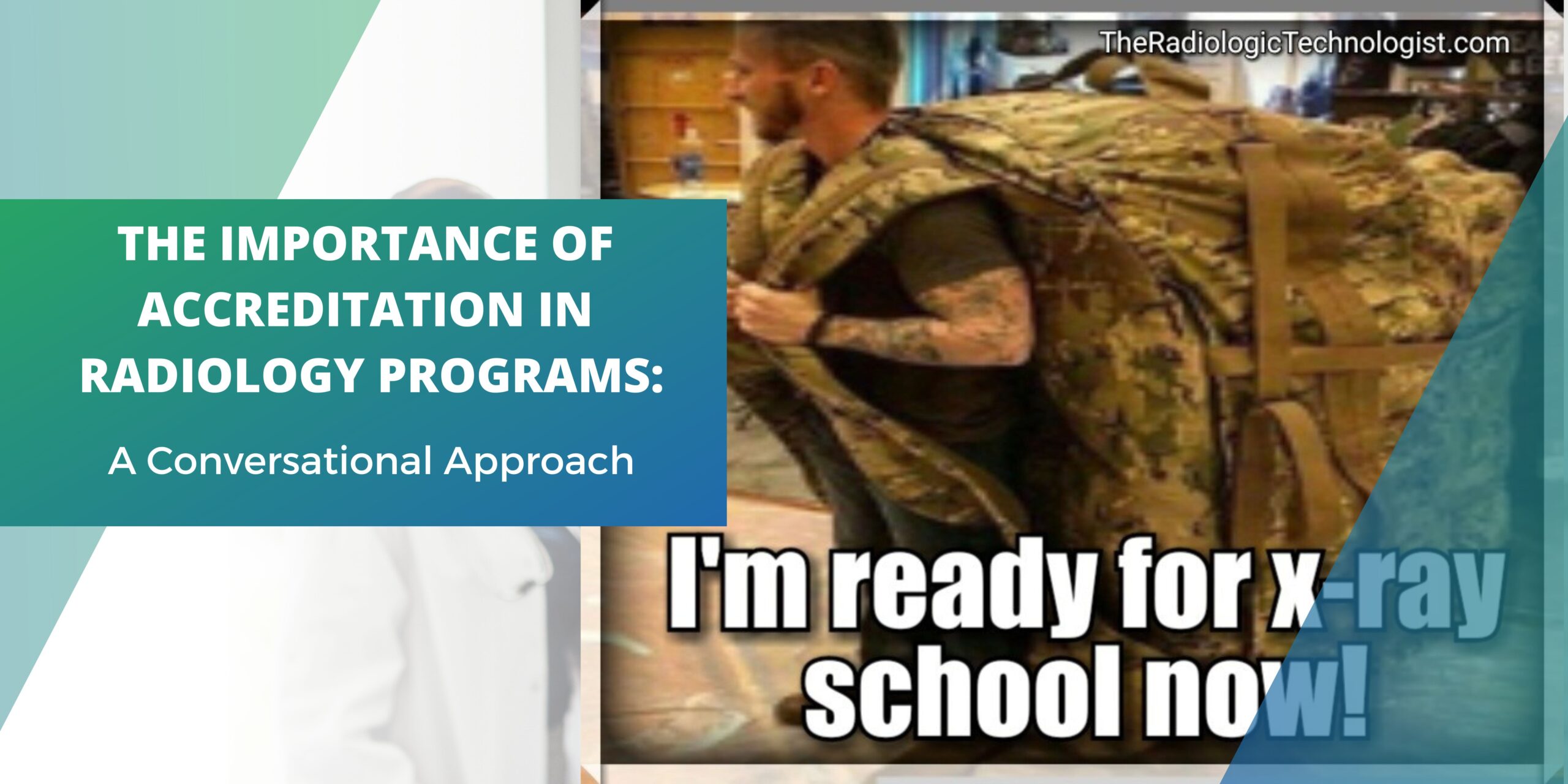If you’re considering a career in radiology, you might wonder how important accreditation is when choosing a program. Well, you’re in the right place!
In this blog post, we’ll discuss the significance of accreditation and share some general experiences from students and professionals in the field. Let’s dive in!

Why Accreditation Matters
Accreditation is like a stamp of approval, ensuring that a program meets specific quality standards and provides students with the necessary education and training. The Joint Review Committee on Education in Radiologic Technology (JRCERT) and the American Registry of Radiologic Technologists (ARRT) are key accreditation bodies for radiology programs.
Graduating from an accredited program can significantly impact your career prospects. Some states and employers may require graduates to have completed an accredited program to be eligible for licensure or employment. Additionally, accreditation can affect your ability to further your education in related fields.
Student Experiences
Some students have attended non-JRCERT accredited programs and still managed to find success in their careers. They were able to sit for the registry and secure jobs in hospitals. However, they acknowledge that the importance of accreditation may vary depending on your location.
Others had attended schools that lost their JRCERT accreditation just before they entered. These students and their classmates could find employment quickly, except for specific hospitals that required JRCERT accreditation.
On the other hand, many emphasize the importance of attending an accredited program. They stress that non-accredited programs can limit your opportunities and may provide a different quality of education.
Pros and Cons of Accredited vs. Non-Accredited Programs
Accredited programs often have higher standards for clinical and didactic education. For example, JRCERT requires one student-to-1 tech ratio during clinical. However, some students have regretted prioritizing JRCERT accreditation over other factors like the quality of the program and its facilities.
Regardless of personal opinions on accreditation, it is essential to consider the potential limitations of attending a non-accredited program. Not knowing where you’ll be in the future makes choosing a program that will not limit your career options crucial.
Additional Resources and Tips for Choosing a Radiology Program
Here’s an extra section with tips and resources to help you make an informed decision when choosing a radiology program.
Research Accreditation Bodies and Their Standards
Familiarize yourself with the accreditation bodies such as JRCERT and ARRT. Understand their standards and how they impact the quality of a program. Knowing what to look for will help you assess and compare programs effectively.
Talk to Current Students and Alumni
Reach out to current students and alumni of the programs you’re considering. They can provide valuable insights into their experiences, the quality of education, and job prospects after graduation. Be bold and ask questions and gather different perspectives.
Visit Schools and Attend Open Houses
Take the time to visit the schools and attend open houses or information sessions. This will give you a firsthand look at the program’s facilities, faculty, and overall atmosphere. Observing the campus and interacting with staff can help determine if it fits you well.
Compare Program Curriculums
Review each program’s curriculum and compare them to see how they align with your interests and career goals. Ensure the program covers essential topics and offers opportunities for hands-on training in clinical settings.
Consider Program Length and Flexibility
Radiology programs can vary in length and format. Some may offer full-time, part-time, or online options. Consider your circumstances, such as work or family commitments, and choose a program that fits your schedule and creates a proper work-life balance.
Evaluate the Cost and Financial Aid Opportunities
The cost of a radiology program can be a significant factor in your decision. Compare tuition fees, additional expenses, and any available financial aid opportunities. Remember that investing in your education is an investment in your future, but finding a program that fits your budget is essential.
Review Program Success Rates
Look at the program’s success rates, including graduation, job placement, and pass rates for the ARRT exam. High success rates indicate a program’s effectiveness in preparing students for their careers.
Conclusion
While accreditation may not be required for every job or state, it is significant in ensuring quality education and can impact your career prospects. When choosing a radiology program, consider the benefits and drawbacks of attending an accredited versus a non-accredited program.
By prioritizing accreditation and adhering to high standards, you can set yourself up for success in radiology. So, take your time, research, and choose the right program for you!

